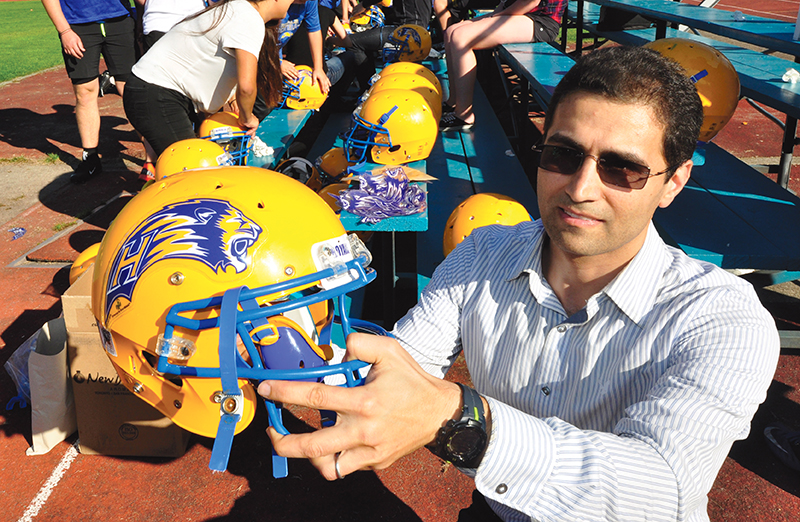
The journey for BrainShield began six years ago with a simple question: “How can we improve helmet performance?”
By asking this, BrainShield creators SFU post-doctoral fellow Daniel Abram and SFU professors Gary Wang and Farid Golnaraghi of the School of Mechatronic Systems Engineering discovered that the majority of available helmet designs were made and tested only to protect the brain against direct collisions. However, most blows to the head are delivered at an angle, rather than head-on.
BrainShield is a decal that can adhere to the outside of a helmet. It was designed to reduce the risk of Traumatic Brain Injury (TBI) that can result from shocks suffered during high-collision sports.
TBI is a high risk for serious injury or death, especially among players of sports such as boxing, football, and hockey. The technology has been in development for five years at SFU’s Head Injury Prevention Lab. Now, Abram’s company, Shield-X Technology Inc., prepares to sell the technology on a wider scale.
Abram explained in a statement that BrainShield is unique because with trauma to the head there can be a “compression” and “rotation” due to the angle of collision and the decal protects against both of those.
Said Abram, “While research studies show that the brain tissues are considerably more sensitive to rotation than compression, the majority of helmets are only designed to protect the head against compression of the brain.”
In addition to its safety features, BrainShield has several other functions. For instance, it glows in the dark for cyclists, and can be customized with a logo for sports teams. Shield-X hopes to soon usecrowdsourcing to fund efforts to produce a higher quantity of the decal for mass distribution.
Jacques Chapdelaine, head coach of the SFU Football team, explained how the team began using BrainShield last year. Said Chapdelaine, “the number of these injuries was reduced from 14 in 2013 to only 4 [sic] recorded injuries in 2014.”
He continued, “I sincerely believe that using BrainShield was an instrumental element in dramatically reducing the number of head trauma injuries and thus can play an incredible role in a holistic approach aimed at significantly reducing the risk of traumatic brain injuries.”
